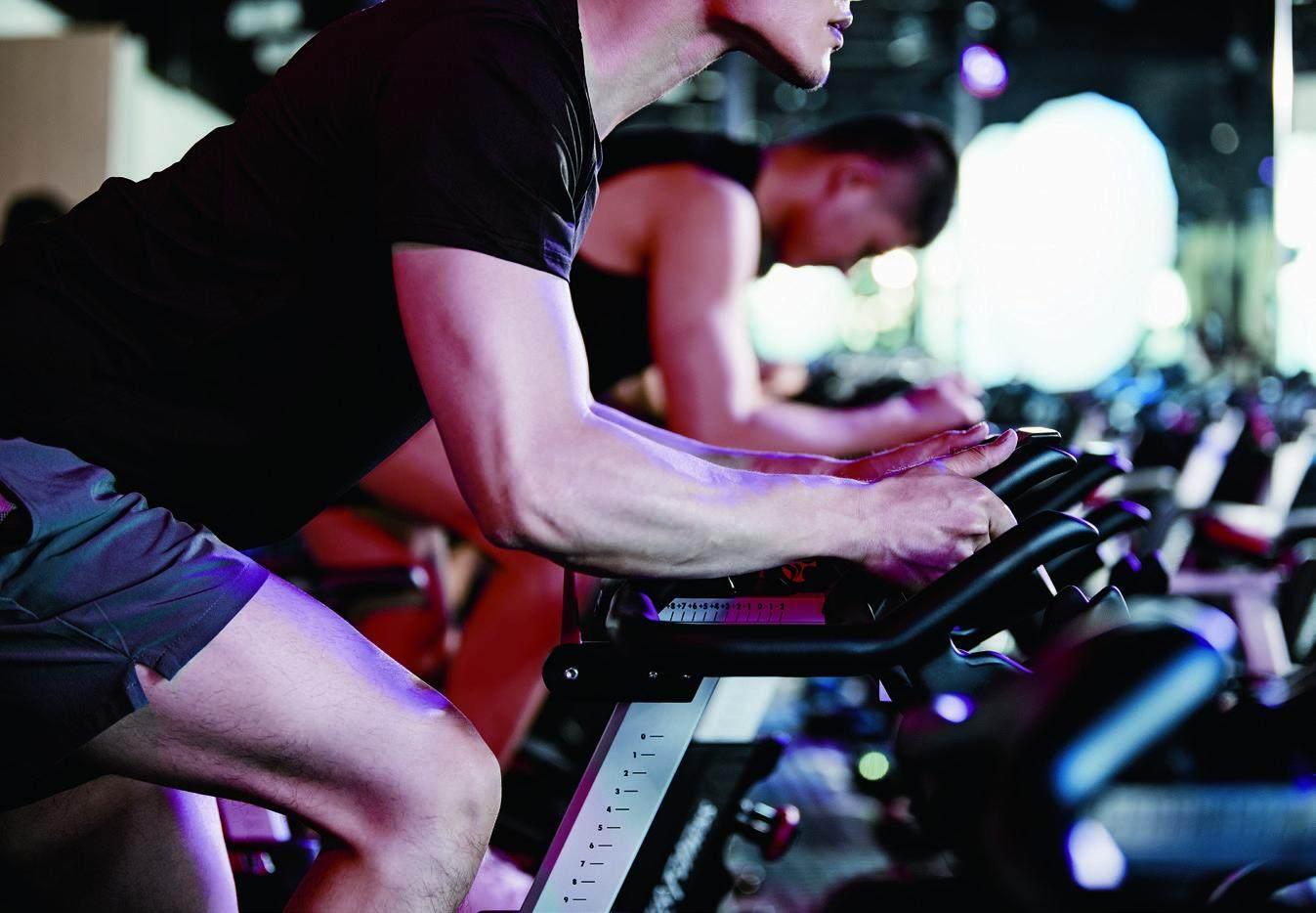Public Fitness Consumption Is Growing Rapidly
By Lynn Yu

Along with the continuous growth of the Chinese economy in recent years and the improvement of the national living standard, household consumption has become the main impetus of GDP growth. In 2021, Chinas total consumption expenditure contributed 65.4% to overall economic growth, driving GDP growth by 5.3%. Among them, the rapid growth of sports consumption is of great significance to the development of sports industry and household consumption growth.
According to the 2022 Research Report on Public Fitness Behavior and Consumption, in terms of the consumption structure of public fitness, physical consumption is still the first choice for residents, with 92% of respondents buying sports products such as sports shoes, equipment and energy drinks in the past year. Compared with physical consumption, in the most recent ten years public fitness service and activity consumption have gained rapid growth with a great increase in proportion of consumption.
Sports consumption is growing rapidly
The growth of the public fitness service and activity consumption, on the one hand benefits from the increase in the demand of Chinese residents for developing and enjoying consumption, on the other hand from the rapid development of the supply of the public fitness service industry.
Taking sports training with a market size of more than 100 billion as an example, according to the data of Qichacha, there are nearly 400,000 registered institutions related to sports training in China at present, among which 85% institutions have been established since 2014. Sports training services choices for consumers have increased significantly. The total output value of the physical education and training industry has also increased from RMB 24.8 billion in 2015 to RMB 202.3 billion in 2020, and the consumption of physical training in China has also grown considerably.
In terms of geographical distribution, Chinese urban and rural residents have great differences in sports consumption. According to the National Bureau of Statistics, China spent RMB 2,032 per capita on education, culture and entertainment in 2020, with urban residents spending RMB 2,592 per capita and rural residents spending RMB 1,309 per capita, about half of the former. Calculated according to this ratio, the per capita sports consumption of rural residents in 2020 was about RMB 800, while that of urban residents was more than RMB 1,600.
Taking Shenzhen as an example, according to the Bureau of Culture, Radio, Television, Tourism and Sports of Shenzhen, per capita sports consumption in 2020 was RMB 3,175.4, of which physical consumption accounted for 57.2%. Other provinces and cities also accounted for 40% to 60% of physical sports consumption.
The decline of per capita consumption of public fitness is also reflected in the consumption of physical goods, services and activities.
The purchase proportion of the three types of sports consumption has decreased to varying degrees, among which the number of people who buy sports services has decreased by 10%, and the loss of customers is the most significant. From the perspective of specific consumer categories, the proportion of people who apply for fitness cards/fitness classes/fitness courses, buy sports equipment (such as basketballs, bicycles, Taiji swords, fitness equipment, health equipment, and more) and audio equipment for square dancing/dancing/exercise class has decreased significantly. On the contrary, the proportion of people who buy sports shoes (sports clothes, shoes and socks, hats, for example), sports equipment(sports glasses, earphones, watches, outdoor equipment, as an example), software or APP memberships, and the proportion of people signing up for sports training classes and hiring sports coaches/private coaches all increased. This became the stabilizer of the fluctuating development of sports consumption.
Open sports spaces becomes the main scene of public fitness
Currently, more than 900 million people in China take part in physical exercise at least once a week, and most of them prefer public sports venues as opposed to spending on renting sports venues, according to the 2020 National Fitness Survey Communique. According to survey data, open sports spaces such as community fitness centers (45%), sports parks (42%) and open plazas (30%) are the main sports scenes of public fitness in China.
Therefore, opening and building new public sports facilities to guarantee the public sports space has become an important part of the governments construction of the national fitness public service system. Since 2018, the area of sports venues has grown rapidly, with the per capita area of sports venues increasing from 1.86m2 in 2018 to 2.41m2 in 2021, an increase of nearly 30%.
Based on the willingness of the public to exercise, increasing public sports venues can greatly promote the participation of the public in fitness. As we can see from the top three sports of public fitness in China, sport walking, badminton and sprint are all sports played in open spaces. One type of public sports venues that have been built frequently in China in recent years are table tennis courts. In 2013, there were 194,400 indoor and outdoor table tennis courts in China, and in 2020 there were a total of 835,000. Table tennis has also been promoted to the top 5 sports for public fitness.
In terms of the most popular commercial sports fitness (aerobic or strength training), according to the 2020 China Fitness Industry Data Report, there were more than 70 million members of the national fitness industry in that year, with a fitness population penetration rate of 5%, accounting for about 16% of Chinas regular exercise population. With the development of sports service consumption in the future, the number and proportion of commercial sports venues and the number of people choosing professional sports venues will further increase.
In addition to public sports venues, commercial sports venues have gradually become an important supplement to the public fitness sports space. According to data from the survey, 32% and 26% of respondents respectively choose sports complexes and commercial gyms for regular exercise. Commercial sports venues with more professional facilities and better environment are increasingly attractive to the young people and highlearning groups in the first-tier and new first-tier cities.
Taking first-tier cities as an example, the four cities of Beijing, Shanghai, Guangzhou and Shenzhen have a total of about 100,000 sports venues, including 13,956 commercial courts and 14,328 gyms, with a portion of more than 25% of commercial sports venues (the proportion of commercial venues in the second- and third-tier cities is about 10%), which has become an indispensable part of the development of public fitness and sports consumption.
The treadmill is the most popular among fitness equipment
In addition to public sports venues and commercial sports venues, household fitness scenes are also a popular choice for fitness. Despite the limitations of space and equipment, households are increasingly participating in fitness from the house, with this industry becoming more efficient with online exercise guidance and the increased effectiveness of home fitness equipment. According to the survey data, non-equipment aerobic or body-weight training (52.8%), exercise with fitness videos from sports apps (51.6%) and exercise with small fitness equipment (51.3%) are the most common forms of home exercise. When it comes to home fitness equipment, the most popular choice is small fitness equipment (13.2%), followed by aerobic fitness equipment (8.4%), power fitness equipment (7.5%) and intelligent interactive fitness equipment (4.9%).
According to this survey, the treadmill is far more popular than other fitness equipment. According to e-commerce sales data, treadmills accounted for about 40% of fitness equipment e-commerce sales. In addition to treadmills, spinning bikes, elliptical machines and rowing machines are becoming increasingly popular.
Fascia guns, which have gained popularity in recent years, also rank highly in terms of e-commerce consumption, accounting for 4.1% of e-commerce sales of fitness equipment. In addition, traditional fitness equipment such as dumbbells, skipping ropes and pullers are still popular choices for the public to exercise. Although the unit price is low, these three itemsconsumption amount of e-commerce account for 4.3%, 4.0% and 2.8% of fitness equipment consumption respectively.
In the commercial gyms and clubs, the top five activities among exercisers are running (67%), strength/muscle building (49%), spinning bike (49%), yoga (33%) and exercise classes (30%), with a wide range of people choosing different activities.
According to the latest data disclosed by the National Development and Reform Commission, the total scale of Chinese residents sports consumption exceeded RMB 2 trillion in 2021. Despite the interference of the pandemic, the average growth rate of Chinese sports consumption since 2014 is still above 10%, which is due to the comprehensive development of various sub-industries.
“China Urban Sports Consumption Report” showed in recent years, the sports shoes and clothing market size has increased by more than 16%, the consumption size of fitness equipment increased by about 10%, the retail sales of sports food and beverage increased by more than 17%, and the sales of ball products, outdoor equipment and sports cars and boats also continued to rise, driving the rapid expansion of physical sports consumption scale.
In the past three years, due to the impact of outbreaks, sports tourism and spectator services were severely disrupted, and the consistent growth momentum of public fitness consumption in China was challenged to some extent. In response to these challenges, the countrys public fitness consumption policy may shift its focus, the Report suggests. In the early stage of the development of the sports industry, the industrial policy was more inclined to adjust the allocation of resources and support the industrial development through funds and institutions. When industrial development starts expanding and maturing, the industrial policy will focus more on improving industrial ecology.
- China’s foreign Trade的其它文章
- Development Thoughts on Promoting China’s Tea Export
- CCPIT Overseas Representative Offices Work Meeting Held
- Economic and Trade Opportunities for China in 20233
- China’s Actual Utilized Foreign Capital Reached New High in 2022
- The National Economy Withstood Pressure and Reached A New Level in 2022
- An Extensive Reader & A Globetrotter,Keep Growing Through Business Endeavors

